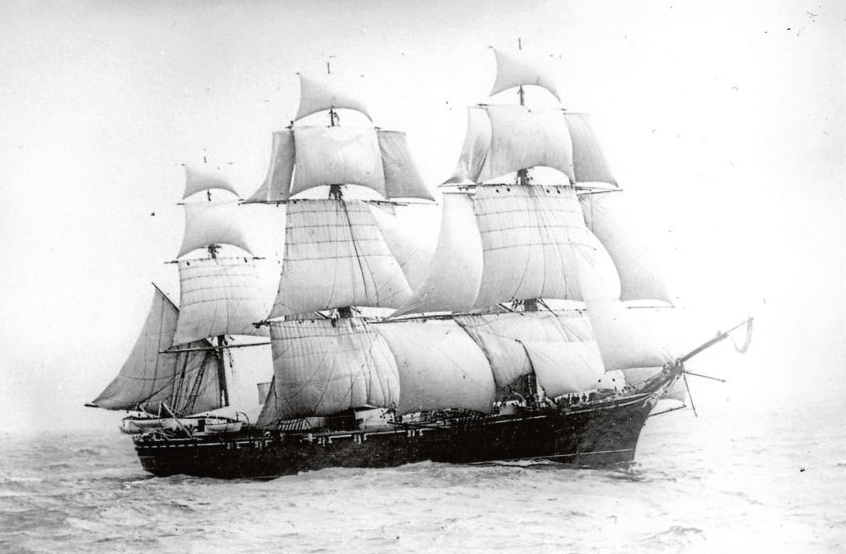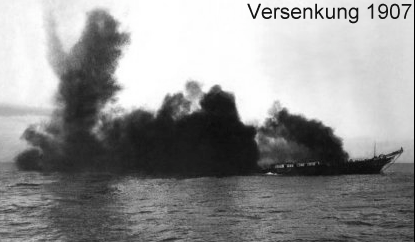-
Posts
1,379 -
Joined
-
Last visited
Content Type
Profiles
Forums
Gallery
Events
Posts posted by Snug Harbor Johnny
-
-
-
The Cutty Sark builder's specs (Willis) and the early photo support that she was built with split top sails, and modifications continued after that - with many ways to rig in the late 19th century. It's all fascinating.
- FrankWouts and shipman
-
 2
2
-
I have a small hobby 'heat sealing' iron - the kind that can be used to set (or loosen) seams in wallpaper, and is also used for shrinking plastic skin over RC model airplane wings and fuselages. It has a temperature control knob, and should work for heat-softening planking wood for model ships ! I suppose a slight moistening before ironing wouldn't hurt, since the heat will drive most of it off - the wood isn't 'soaked' for any length of time. I have to confess that when I did the planking on the Wasa (quite a few years ago), the curvature of the bow was the hardest to contend with ... so I put the end of the plank in my mouth where warm saliva and the action of tongue, palate and teeth caused enough bend to make the plank cooperate for a significant bend. There was a 'knack' for telling how far to 'push' the plank and avoid breakage. I'd let the wood dry and the bend would set before I glued it in place.
- Canute, mtaylor and thibaultron
-
 3
3
-
Much earlier in the log is a link to an important photo of the Cutty Sark: https://viewer.slv.vic.gov.au/?entity=IE930286&mode=browse
This may be one of the first modifications to her rigging after her days as a Tea Clipper (a relatively short period in her career due to the opening of the Suez Canal). I found a photograph said to be Thermopylae early in her career (in a link from the Aberdeen Museum website with photos of her in many phases of existence all the way up to a shot of her being torpedoed), when she was rigged with four large sails on each mast and no extra yards. I have doubts on this photo under sail (attribution wise) on a couple of points; There is a 'triple' dolphin striker not seen on any other Thermie picture, There is no yellow rub strake where there should be one, There is an extra white painted strake below a white painted gun wale that the Thermie didn't have. But the photo does show a common way to rig an early Clipper. Many fine ships were rigged differently in each phase of their existence (the 'Big T' was bark rigged at one point), and I suppose that its fair to model a ship as she was at any phase ... there being no single "correct" configuration.

-
'Looks good to me. Another option might be to use a knot we did in Scouting to tie a tent rope to a post or a tent peg- the line is passed around for an overhand half-hitch (for tents or dining flys it was spaced away from the post or peg to allow for later shortening or lengthening of the attachment, but for the end shroud it would be right against the shroud), then the line is wrapped twice underhand and snugged. For shroud application the end would stick inboard and be less visible. If time and convenience are not an issue, the end could be a little longer and lashed vertically against the shroud with find thread. I'll have to look-up a cow hitch (new to me). BTW, is there a source for the 'pear shaped' (triangular?) deadeyes? 'Seems the Wasa had them and if I'm going to finish it, I'd like to get the proper shape for the time period. Ahoy!
-
'I see,' said the blind man. Then he picked up his hammer and saw. 'Guess that research into whatever ship one is interested in is 'key' ... and there is so much that can be found on-line with patient gleaning (and a critical eye). I've learned more about the Wasa and the Thermopylae in the past month than I knew from all my years before - and the expertise on this forum (and the build logs) are invaluable.
-
-
I was aboard the U.S.S. Constellation in Baltimore harbor in the 70s, and bought a medallion (a fundraiser) as a pass for unlimited future visiting - although I haven't returned since. I'm told the Navy 'repaired' her in the 1850s, since it was easier to get funding for refurbishment than to build a new ship - yet what they did was to effectively re-build her as a new ship (staying 'under the radar'). That's why the present incarnation is a lot different than the original ship, and the model likely is likely closer to the original vessel. Its looking good so far !
- popeye the sailor, J11, mtaylor and 2 others
-
 5
5
-
I've reviewed your build thus far and am impressed by the care and craftsmanship you exhibit. It is an inspiration for me to better my intermediate (at best) technique, yet in this line we all must chart our own course. Doing the best we can , within practical limits, can be a source of satisfaction one can't put a price on.
-
-
I single planked the Billings (original version) Wasa in the 70s, and was mostly happy with it (although one of the bulkheads was a little 'fat' and produced a slight bulge at that point - which I've seen on other builds of the old kit. I'm taking it up again to finish, with a little surgery to make the model conform to what is NOW know of the original ship. Yet I wonder (and one naval historian sees merit in the argument) if the the original Wasa DID have a forecastle deck covering the capstan and with armaments above - since the hull is planked high enough in that area (per the ship itself in Stockholm) to have had a deck. Why would there be railings there if a deck was not envisioned, and why would the front be open to breaking seas (apart from a flimsy fence) that would wash down the main gun deck? The reconstructed stern is definitely higher than on my old model, and more weight and height above the waterline would have contributed to her top heaviness.
Edit to the above march 23rd, 2022
I'm inclined now to think that the forecastle deck was NOT built on the Vasa due to the modifications to her imposed on the builders that made her unstable (even if one had originally been planned) ... simply because the addition of the fore deck (common to ships of that era) could have made her unlikely to sail away from the build site as she was 'tippy' enough without any additional weight above the weather deck. The marvelous restoration in Stockholm is how the Vasa was done, and the 1/10 museum model is now painted as close as experts can determine how the original looked on her fateful maiden voyage.
-
It looks like there are a few 'low spots' in the first planking. Fixing that before going further should help. I've used 'one minute' epoxy in the past (this was before CA was available, and I had to be quick mixing and applying) and held a plank in place using the long fingers of both hands ... and half-listening, half-watching the TV while the 'set' of the bonding agent firmed. Still, the quality of the fairing will determine the quality of the final planking.






Cutty Sark by Bruma - Revell - 1:96 - PLASTIC
in - Kit build logs for subjects built from 1851 - 1900
Posted
I'll second that.